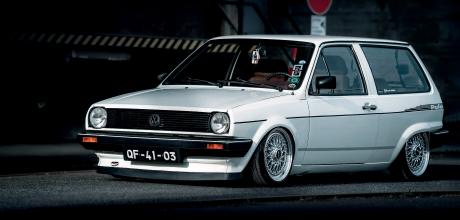Euro look 1988 Volkswagen Polo Breadvan Mk2
After a complicated four-year restoration, you’d forgive Vitor Santos for locking this immaculate Polo breadvan away for special occasions. But where’s the fun in that?
Words: Alex Grant
Photos: Martin Hillmann
THE GRAND TOUR
EURO-LOOK POLO BREADVAN
Show 'n' Go Polo Breadvan tours Europe…
For most cars, there comes a point in life where things start to slow down. It’s that age where daily driver duty fades out in favour of preservation, restoration and rising values, each capable of turning once ‘ordinary’ machinery into a pampered, low-mileage showpiece. However, things don’t always pan out that way, and Vitor Santos had very different plans for his Mk2 Polo breadvan.
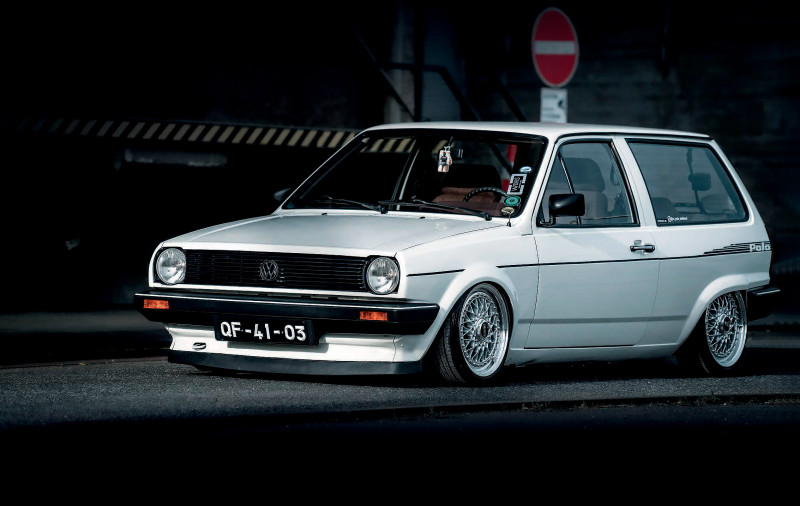
Whereas most four-year rebuilds would result in a car being retired for special occasions, this one kick-started a more interesting existence than it ever had as a daily driver. A grand tour of Europe’s biggest car shows spanning five years, ten countries and 50,000km (31,000 miles), all without the assistance of a trailer and – perhaps even more impressive – under the power of its factory-fitted 1.0-litre engine and four-speed ‘box. But long distances were part of the process long before Vitor’s complex story even reached the road.
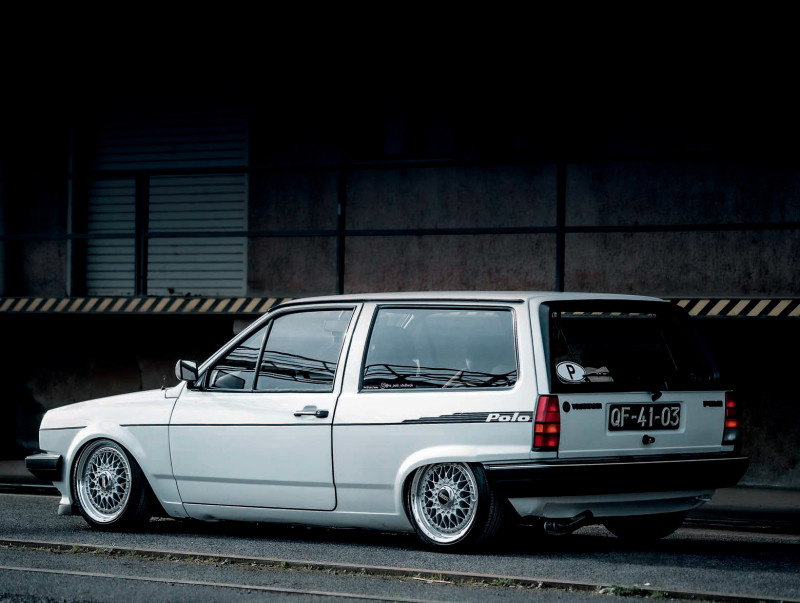
“I bought this car in February 2012, with plans to fit new suspension, rims and increase the power – just essential stuff,” he explains. “Then, in September, I decided to make a new start and relocate to Germany, so I left the Polo at home in Portugal and for two years I only drove it while I was visiting on vacation. Finding parts was much easier after the move, but transporting them to the car became a lot more difficult… and a lot more expensive too.”
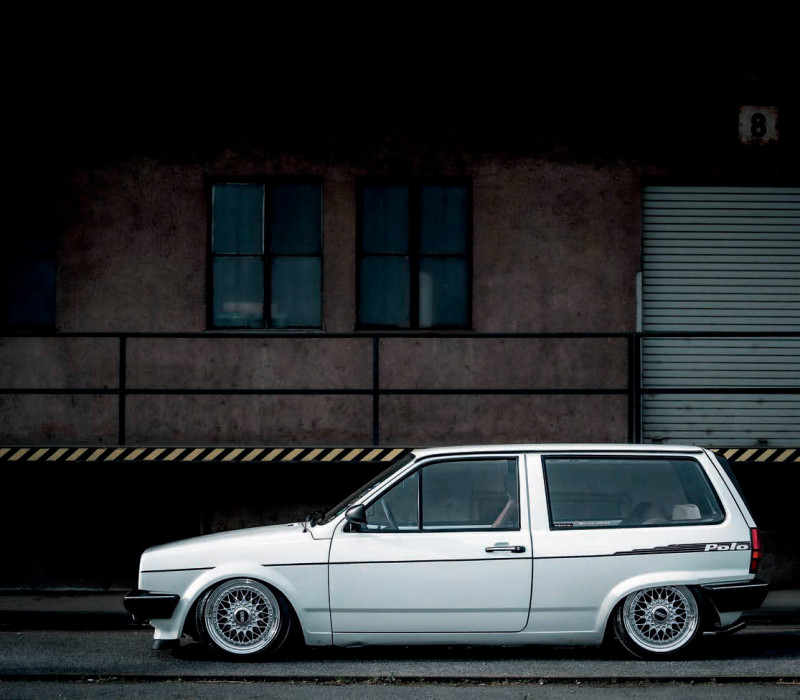
As a third-generation Volkswagen enthusiast, Vitor was stepping into that slow-burn process with his eyes wide open. Growing up around his father’s ’66 Beetle and grandfather’s Mk2 Golf and both of them having Brasilia restorations on the go, he picked up mechanical curiosity and an openminded attitude to enhancing factory spec that his first two cars – both Renault Clios – didn’t really satisfy. So, when a friend started making noises about parting ways with a white ’88 Polo, it was only a lack of space in his parents’ project-filled garage that stopped him snapping it up instantly.
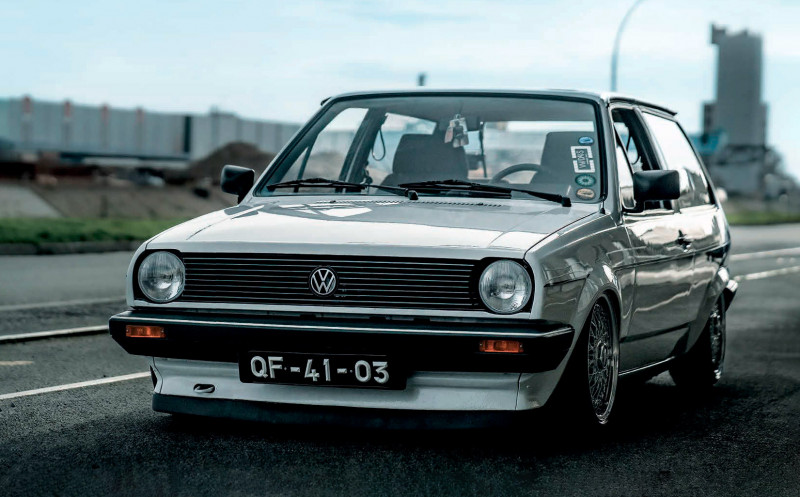
“I liked the styling, I thought it was funny,” he smiles. “This one was cheap, but it was in bad shape and there was a lot to fix – the engine was leaking, it didn’t have the original interior and, although there wasn’t much rust on the bodywork, it had been painted badly and was looking tired. I started by fitting a set of 13-inch RSL Cults, suspension and a metal roof rack and drove it like that for two years, then I took it apart with my brother for some serious restoration.”
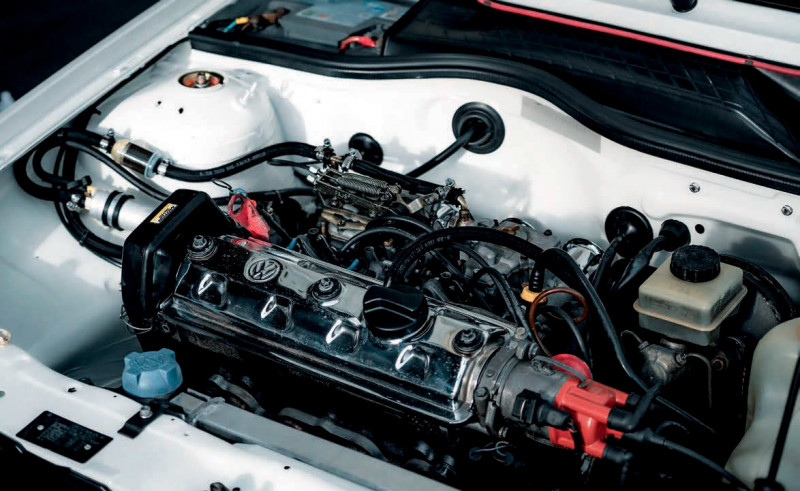
With several international borders between him and the car, patience was always going to be important. Having steadily stripped the Polo back to its bare shell, it took four trips (two with a trailer-load of parts) from his new home in Ratingen, northwest Germany, to Porto before the build could really start.
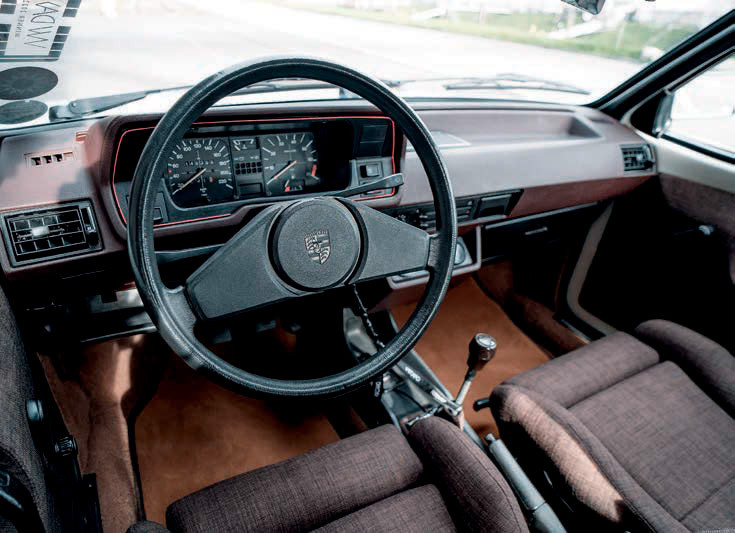
This was, at its heart, a restoration, refreshing the factory Alpine White paint with only minor alterations to the metalwork. Early Polos offer limited space for aggressive wheel fitments, and the breadvan’s flattopped rear arches are the most restrictive of the lot. Working to Vitor’s measurements, the bodyshop liberated an extra 20mm of clearance at the back before the car rolled into the spray booth – enough to comfortably house a set of 15-inch wheels.
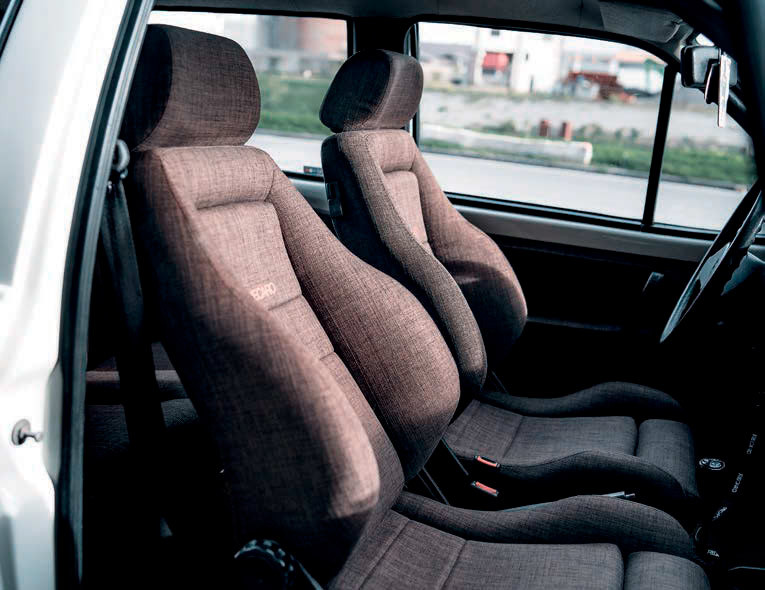
Re-working the interior was a little trickier, and hardly any of the mismatched trim that came with the car survived the rebuild. Those deep-bolstered Recaros turned up in Germany, lifted from a Phase 2 Escort RS Turbo and paired with the less obvious swap to the rear bench from a Polo saloon (the ‘Derby’ or ‘Classic’, depending on the age of the car) which adds built-in headrests. Having figured out how to mount everything into the car, Vitor then deposited the entire set, plus the door cards, at Robert Mischewski’s trim shop west of Dusseldorf to be wrapped in a rich and retro shade of brown.

“I picked the fabric from his catalogue,” he tells us, popping the driver’s door open. “It’s beautiful material – I am not sure what it is, but it’s designed for sofas so it’s really comfortable and tactile, but it also doesn’t wear out easily. Overall, I think the interior was the hardest part of the build, but it’s also my favourite.”
With time to consider the details, those trailer-hauled loads of parts have tied together seamlessly. Vitor managed to track down a Derby donor car for the brown carpet and dashboard (later Mk2 Polos had grey and black) then added a Porsche 924 two-spoke steering wheel and a bank of VDO gauges in the head unit slot to make sure the engine is behaving. Outside, the rear spoiler is part of the aero package for the eco-tuned Polo Formel E, the high-level brake light is an OE-spec Hella item, and the splitter is from a Mk2 Golf CL. Inspired mostly by leafing through pictures of early Golfs – there aren’t many show-standard breadvans to take cues from, after all – it’s a timeless re-work of that uniquely boxy shape.
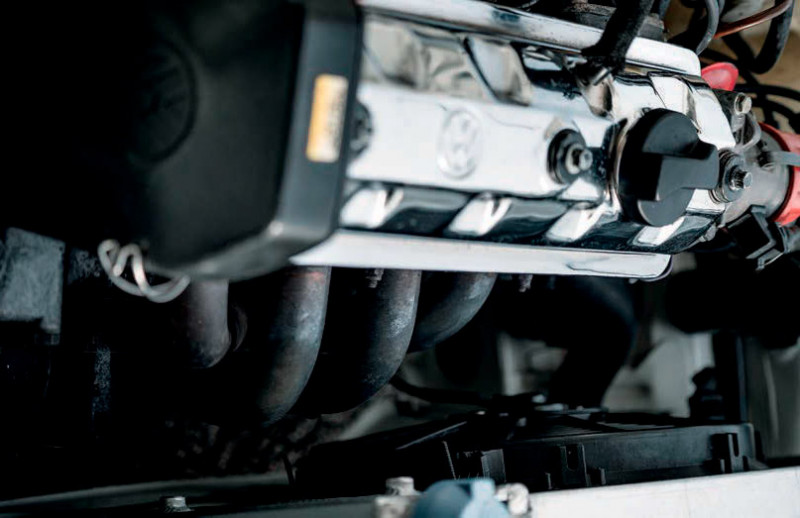
However, Vitor admits he didn’t always stick to his earliest plans. “When I first built the car, the idea was to eventually fit a 1.3-litre turbo, then a set of Weber carburettors came up at a good price,” he shrugs. “I’ve always loved Webers, so I bought them and had this crazy idea to rebuild the 1.0-litre and see how long it would last. I didn’t think it would last long, so I’ve always kept a spare 1.3-litre engine the garage, but I haven’t needed it yet. The 1.0 just won’t die.”
With a mechanically minded family, he didn’t have to look far for help with the rebuild. The original hydraulic-tappet engine – all 1,043cc of it – was overhauled by his father-in-law in 2017, and it’s still mated to the factory 084 four-speed gearbox, albeit now with a Sachs high-performance clutch. Its twin 40mm Webers draw in air from the back of the bay, mixed with fuel from a high-flow electric pump and flowed into the cylinders through a Sorg Motorsport inlet manifold. Behind the docile twin-headlamp grille, the four-branch stainless manifold is paired with a custom exhaust system tipped with an upswept tailpipe.
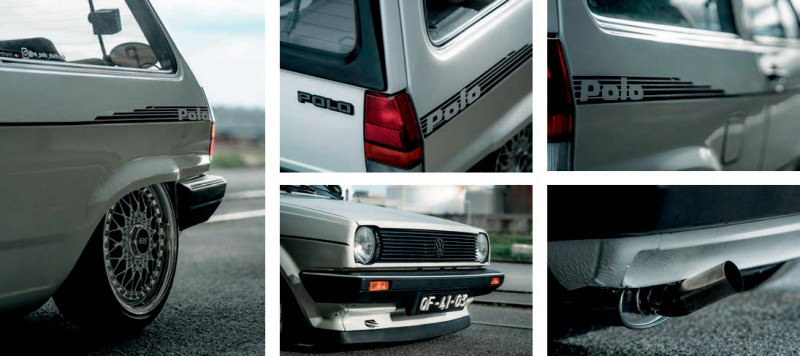
Consider the modest-sounding 63hp in context here – that’s almost 50% more power than it made in factory spec, and it’s now produced with the sort of theatrical soundtrack you’d normally expect while spectating at the Berg Cup. It's a curiously addictive experience, as Vitor explains. “The idea with the 1.0 wasn’t to be fast, but to show that a small engine could make big trips,” he tells us. “It gets up to 140km/h [87mph] easily for joining European highways, but I usually travel at 100-120km/h [62-75mph] which uses about seven or eight litres of fuel per 100km [30-33mpg]. That’s good for a four-speed gearbox, and the sound is brutal. At a time when the trend is fitting big block engines, I bet on saving a little one to find its limits. It has never complained.”
He’s familiar enough with it to know. The Polo finally rolled out of the garage under its own steam in June 2018, pausing for a detailing session at The Car Spa Company in Portugal, before breezing its 1300-mile run-in trip to Germany via a short stop at the VW Days show in France. Constructed well out of the social media limelight, Vitor’s hard work was suddenly rubbing shoulders with Europe’s best builds at events across Belgium and the Netherlands. No small feat for the quirky (and historically quite unfashionable) breadvan.
Of course, nothing is ever entirely complete, and that first summer of shows highlighted a very specific shortfall in the Polo’s spec sheet. Despite liberating some useful arch space in during the body restoration, the ride height was limited by the compromises of a static drop. When the car returned to Portugal for its annual inspection at the end of 2018, Vitor factored in some extra time to equip the boxy hatchback with an air ride system from local company A2K. It’s a package of proven hardware; a Viair compressor and Streetec tank hidden in the boot, with the Air Lift management’s tethered control panel in the centre console as the only visual clue. That and a new-found ability to cover road trips at a bodywork-preserving ride height, then tuck its gold-centred 15-inch Rial Cobra RS wheels under the arches while parked. Shortfall cured.
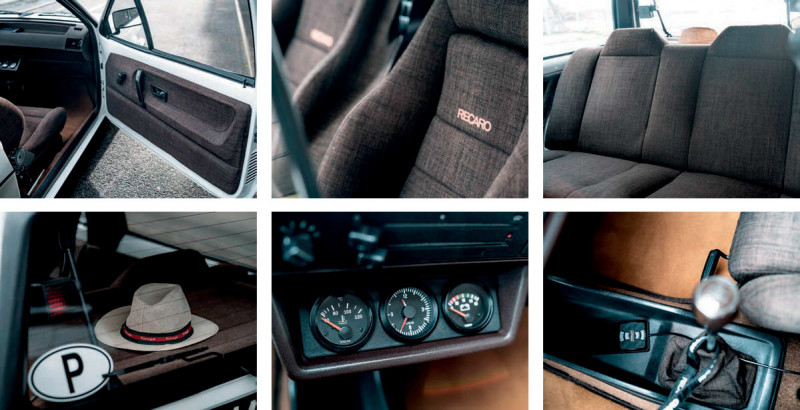
“The air ride was easy to fit, but I had a small problem at the front because the bags didn’t go down as much as I wanted,” he recalls. “So I spoke to A2K and they adjusted it all for me. It’s as low as the car can go on a 15-inch wheel, and that’s exactly how I wanted it.” By the end of 2019, the Polo had appeared everywhere from Portugal to Poland and Denmark, visited Le Mans and Wolfsburg and even lapped the Nürburgring. It’s the sort of endurance road-tripping even modern city cars rarely get tasked with, and all done without simple luxuries – like air conditioning, power steering, or even a radio. And if it hadn’t been for the not-so-small issue of a global pandemic in 2020, there’s every chance it would have even more miles under its belt. They don’t make ‘em like they used to.
However, that unplanned downtime offered some opportunities for fine tuning. With Europe’s car scene locked down, Vitor drove the Polo back to Portugal for its annual inspection then set off on a separate road trip around the country to consider his next moves. Finishing touches that just set of the overall look, like the period-correct swage line graphics and a tired set of Japanese-import BBS RS which he had restored locally. With lockdowns dragging on into 2021, it’s taken until last year for that hard work to pay off, materialising as a summer of near-constant border crossing that’s included its first trip to the UK, for Edition 38.
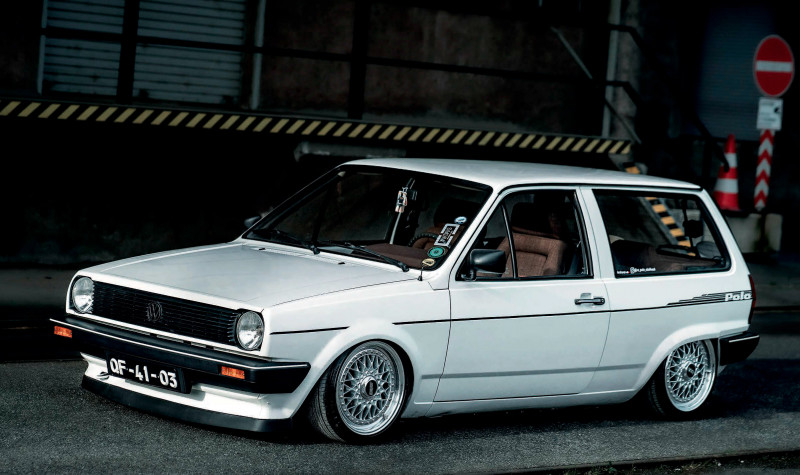
“I wouldn’t change a thing. It gets a lot of attention, and people giving me a thumbs up saying they used to have one, so it’s reached the point where doing anything else would spoil it,” he says, adding that that would include revisiting the engine swap. “That 1.0-litre has done almost 50,000km since the rebuild and hasn’t let me down – this small block car has done what many with a big block won’t dare.” However, there’s one last outing it hasn’t managed. In five years of road trips the Polo has yet to make an appearance at any shows in Portugal, so Summer on Stance is high on the to-do list for 2023. Held just outside Porto, it’s one final outing before the breadvan steps out of the limelight and gives new stablemate – an identical car, built on the same day and with almost the same ‘QF’ registration plate — room to shine. One to watch in the future, if this one is anything to go by.
“You have to know when to leave the scene before you saturate it,” says Vitor. “There are three unfinished projects in the garage, including my Mk5 GTI Edition 30 daily driver, my other Polo and a Mk1 Jetta Coupe that I bought last July. Sure, I’ve thought about quitting modifying, but the addiction is too big – I’m looking forward to building something new, on a different base, but the Polo isn’t going anywhere.” At least, not for now. A little later than most cars, this well-travelled Polo is on the cusp of a well-earned break. That point in life where thousand-mile road trips make way for preservation, restoration and breathing life back into other project cars. But, with timeless styling, an addictive soundtrack and plenty more of Europe still to explore, it’s unlikely to be gathering dust for long.
«The idea with the 1.0 wasn’t to be fast, but to show that a small engine could make big trips»
DUB DETAILS
- ENGINE: 1043cc four-cylinder petrol (fully rebuilt), 2x Weber 40mm carburettors, 1.0-bar electric fuel pump, VW Motorsport/Sorg Motorsport inlet manifold, stainless steel exhaust manifold, custom exhaust system with upswept tailpipe, factory four-speed gearbox, Sachs performance clutch
- CHASSIS: 6.5x15” ET38 BBS RS wheels with chrome lips, 195/45 Nankang AS1 tyres, A2K air suspension kit with Air Lift management, Viair 485c compressor and Streetec Tankbomb1 air tank
- EXTERIOR: Full respray in original Alpine White, rear wheel arches widened by 20mm, VW Classic Parts OE bumpers with white pinstripe, Mk2 Golf CL splitter, retro ‘Polo’ side graphics, OE Hella high-level brake light, Formel E rear spoiler
- INTERIOR: Ford Escort RS Turbo S2 Recaro seats (front), Volkswagen Polo Derby bench (rear), full retrim with brown sofa fabric at Robert Mischewski Sattler, Porsche 924 twospoke steering wheel, VDO clock, oil and voltage gauges in head unit slot, Volkswagen Polo Derby brown carpets and dashboard
- SHOUT: Ginovonmonster, Mickael Marques, David Marques, Michael Erdt, Antônio Coelho, Tiago Barbosa (Automobile Spa), my brother André Santos, and of course my wife for all her patience putting up with this crazy hobby!


